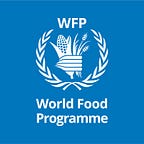Sri Lanka: Learning lessons on disaster response
When disaster strikes
In the wake of Tropical Cyclone Roanu in late May, 2016 parts of Sri Lanka were devastated by the worst floods in over two decades, displacing hundreds of thousands of people, destroying homes and burying entire villages. As much as 300 mm of rain fell over three days in some locations, causing widespread flooding and landslides.
World Food Programme’s response
The Government of Sri Lanka and United Nations World Food Programme (WFP) provided emergency cash assistance to 22,900 flood and landslide victims through Divineguma, the Government’s largest social safety net scheme, for the first time in Sri Lanka. Cash assistance, to the value of US $15 per person, per month for three months, allowed victims to buy their preferred, nutritious food quickly.
It also prevented the poorest — many of whom had lost family members and had seen everything they owned buried in landslides — from building up high debts to feed their remaining loves ones. This immediate support is helping Sri Lankans to recover quickly and WFP is working to build communities’ resilience to natural disasters in the future.
Read more about WFP’s work in Sri Lanka.
FOOTNOTES: Text by Sadhana Mohan, WFP Sri Lanka Communications Associate
